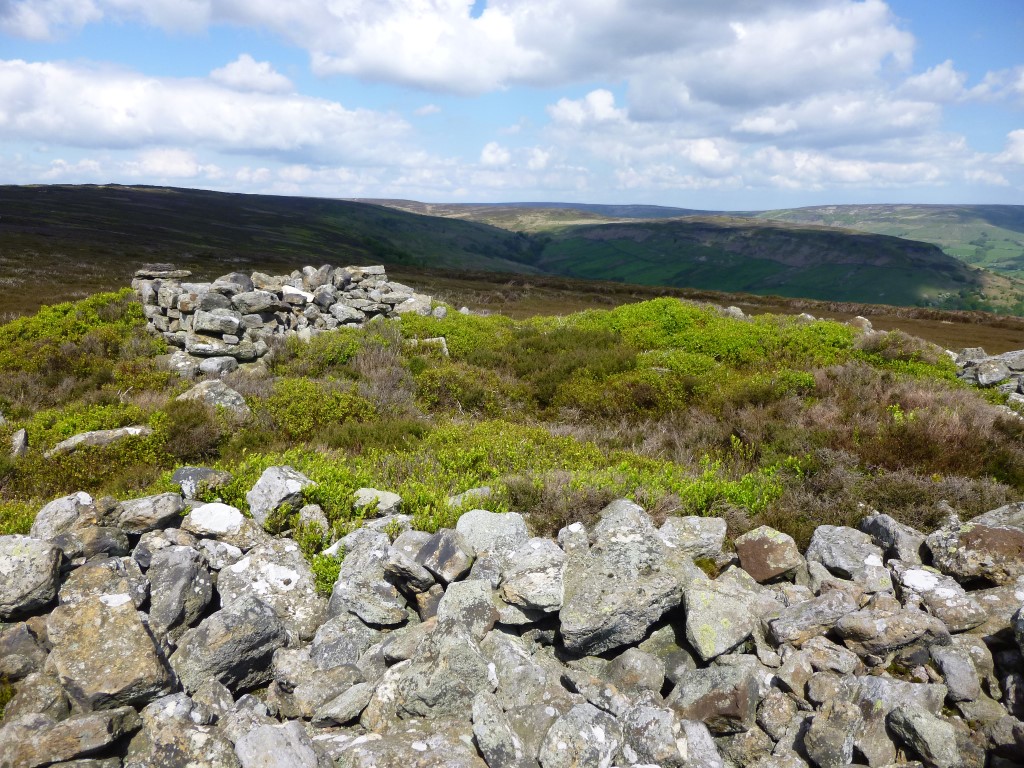
I had a short break in the English Peak district for the recent late May holiday. The first day was spent visiting various megalithic sites in the vicinity, one of which was Hob Hurst’s House on Beeley Moor, high above Chatsworth. The ‘House’ is a Bronze Age burial chamber, unusual for being square in shape rather than the usual circle. It’s now pretty ruinous, a tumble of stones within a still clear ditch and bank, and enjoying impressive views across Derbyshire.
There are no particular stories attached to this site, but hobs, as a faery family, are quite well represented in the area. Not far away, there is Hob’s House Cave in Monsal Dale, a little further north of which is Hob Thirst’s Cave in Deep Dale, near Buxton. The hobs, or hobgoblins, in question are evidently wild-living examples of the creatures who will come to assist with the heavy jobs on farms (as is the case as well with the better-known brownies and boggarts). Hobs are generally renowned for their size, their strength and their stamina- undertaking huge amounts of physical labour very quickly- which is very handy when you’re in their good books, obviously, but problematic when they decide to play pranks. One Lincolnshire hob is known for having mischievously put a farm wagon on the barn roof, a testament to his brawn, but a major inconvenience afterwards for the farmer.

Size and their strength are, in fact, exactly what we should anticipate from these beings. The names often associated with hobs- ‘hurst,’ ‘thrush,’ ‘thrust’ and ‘thirst’- all derive from the Anglo-Saxon word þyrs– thyrs (pronounced roughly as thürs)- which means ‘giant.’
Most directly comparable to Hob Hurst’s House is Obtrusch or Hobthrush Rook (also called Hobgoblin’s Rock) which is a round cairn in Farndale West, North Yorkshire. This is a rather larger and more intact monument, but in a very similar high, remote and exposed location. Other placenames from the north of England suggest the preferred habitations of other hobs- such as Thrush Hole, near Halifax in West Yorkshire, and Thrushgill, near Kirkby Thore in Westmorland (and, very probably, another Thrush Gill near Sedburgh). The hob of Runswick Bay on the North Yorkshire, who could cure whooping cough, lived in a cave, as did that of nearby Mulgrave Wood (also in the vicinity, there’s also a small hill in Glaisdale known as Hob Garth). Their hob’s preferences were, it would seem, for remote valleys and secluded caves where they could find shelter undisturbed by people during the daytime, and from they would issue at night to work on farms. I discussed other examples previously in my post on hobgoblins.

One thought on “A visit to the hob’s house”